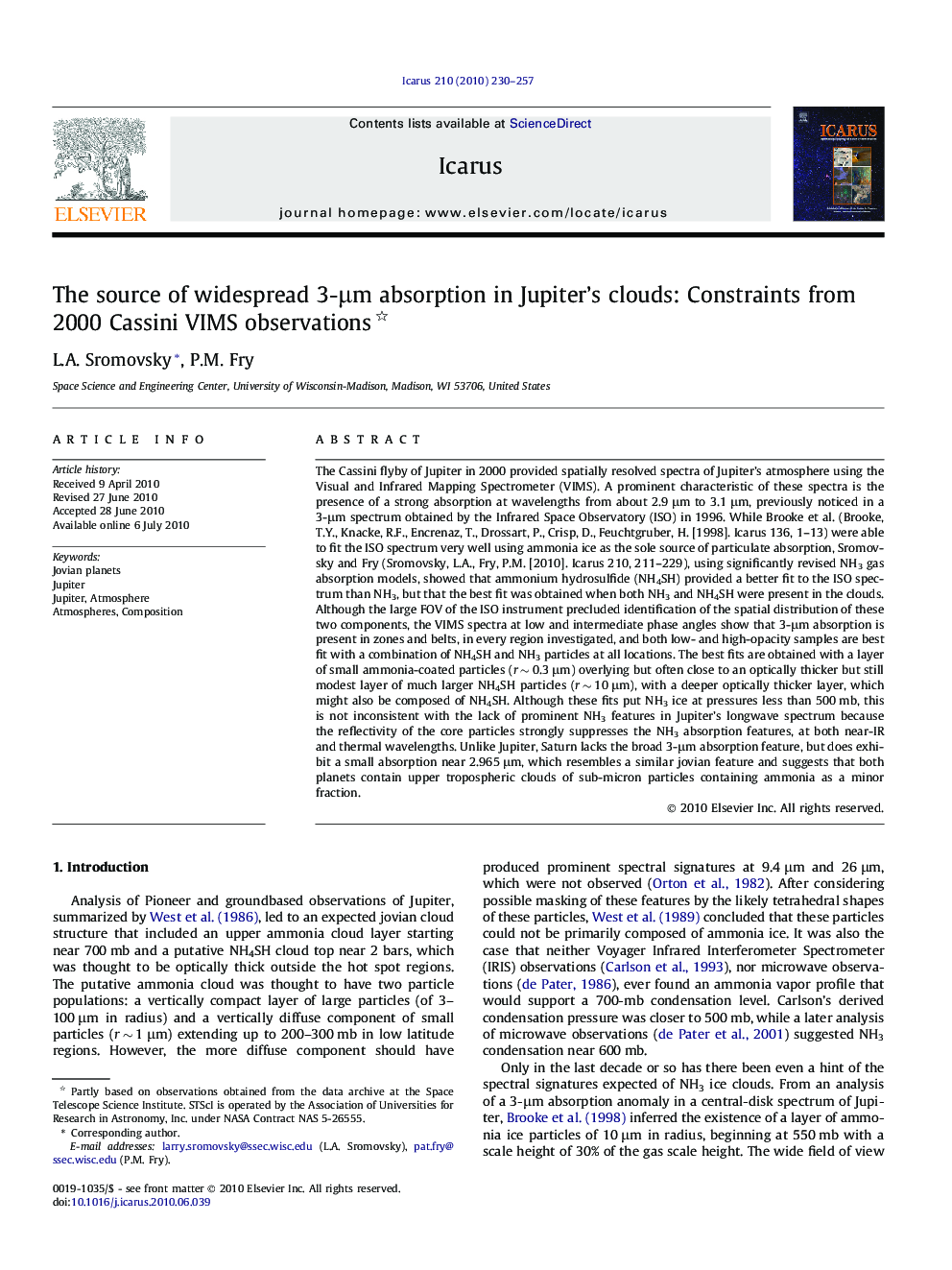| کد مقاله | کد نشریه | سال انتشار | مقاله انگلیسی | نسخه تمام متن |
|---|---|---|---|---|
| 1774156 | 1021157 | 2010 | 28 صفحه PDF | دانلود رایگان |
عنوان انگلیسی مقاله ISI
The source of widespread 3-μm absorption in Jupiter's clouds: Constraints from 2000 Cassini VIMS observations
دانلود مقاله + سفارش ترجمه
دانلود مقاله ISI انگلیسی
رایگان برای ایرانیان
کلمات کلیدی
موضوعات مرتبط
مهندسی و علوم پایه
علوم زمین و سیارات
علوم فضا و نجوم
پیش نمایش صفحه اول مقاله

چکیده انگلیسی
The Cassini flyby of Jupiter in 2000 provided spatially resolved spectra of Jupiter's atmosphere using the Visual and Infrared Mapping Spectrometer (VIMS). A prominent characteristic of these spectra is the presence of a strong absorption at wavelengths from about 2.9 μm to 3.1 μm, previously noticed in a 3-μm spectrum obtained by the Infrared Space Observatory (ISO) in 1996. While Brooke et al. (Brooke, T.Y., Knacke, R.F., Encrenaz, T., Drossart, P., Crisp, D., Feuchtgruber, H. [1998]. Icarus 136, 1-13) were able to fit the ISO spectrum very well using ammonia ice as the sole source of particulate absorption, Sromovsky and Fry (Sromovsky, L.A., Fry, P.M. [2010]. Icarus 210, 211-229), using significantly revised NH3 gas absorption models, showed that ammonium hydrosulfide (NH4SH) provided a better fit to the ISO spectrum than NH3, but that the best fit was obtained when both NH3 and NH4SH were present in the clouds. Although the large FOV of the ISO instrument precluded identification of the spatial distribution of these two components, the VIMS spectra at low and intermediate phase angles show that 3-μm absorption is present in zones and belts, in every region investigated, and both low- and high-opacity samples are best fit with a combination of NH4SH and NH3 particles at all locations. The best fits are obtained with a layer of small ammonia-coated particles (r â¼Â 0.3 μm) overlying but often close to an optically thicker but still modest layer of much larger NH4SH particles (r â¼Â 10 μm), with a deeper optically thicker layer, which might also be composed of NH4SH. Although these fits put NH3 ice at pressures less than 500 mb, this is not inconsistent with the lack of prominent NH3 features in Jupiter's longwave spectrum because the reflectivity of the core particles strongly suppresses the NH3 absorption features, at both near-IR and thermal wavelengths. Unlike Jupiter, Saturn lacks the broad 3-μm absorption feature, but does exhibit a small absorption near 2.965 μm, which resembles a similar jovian feature and suggests that both planets contain upper tropospheric clouds of sub-micron particles containing ammonia as a minor fraction.
ناشر
Database: Elsevier - ScienceDirect (ساینس دایرکت)
Journal: Icarus - Volume 210, Issue 1, November 2010, Pages 230-257
Journal: Icarus - Volume 210, Issue 1, November 2010, Pages 230-257
نویسندگان
L.A. Sromovsky, P.M. Fry,